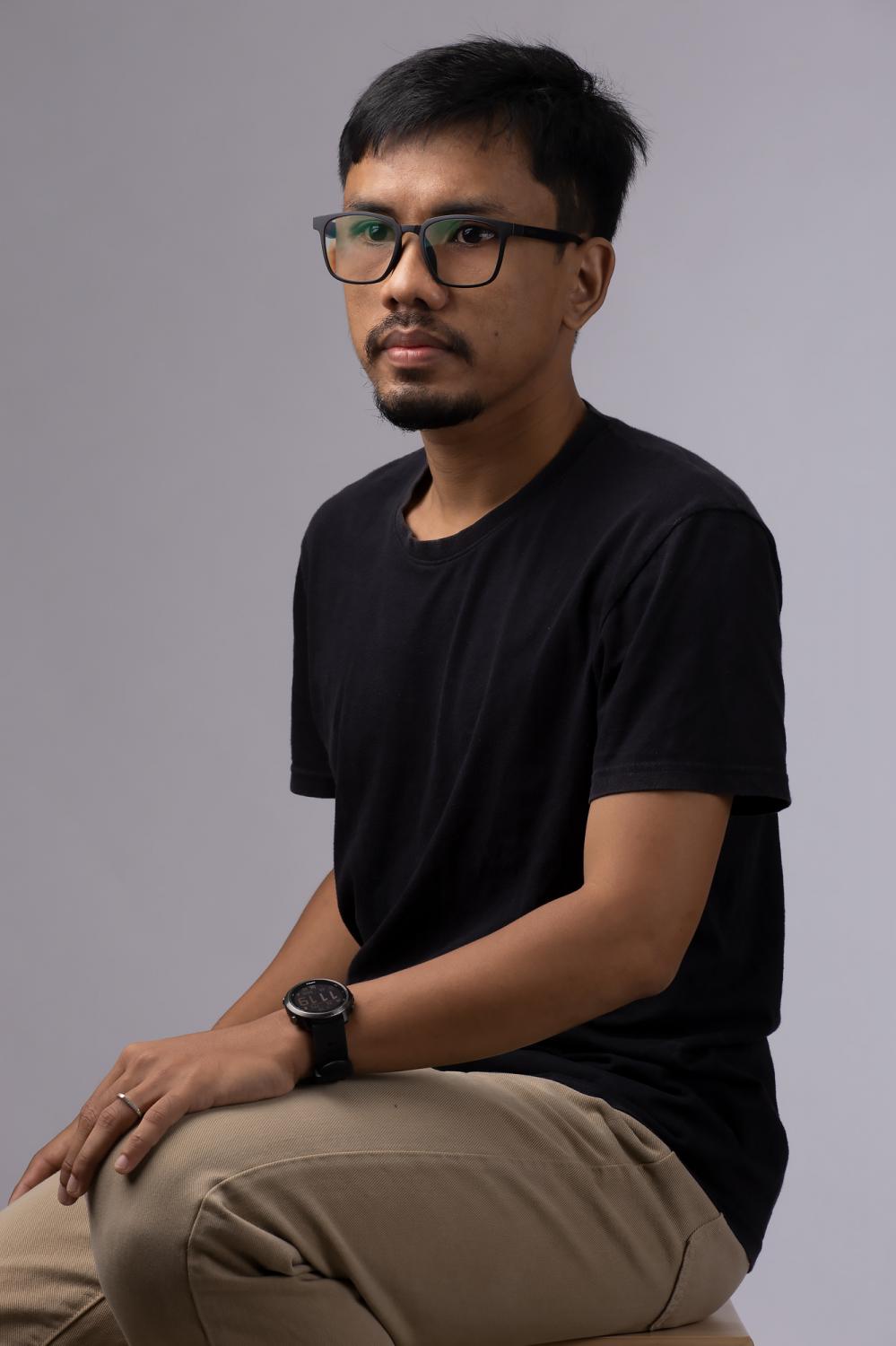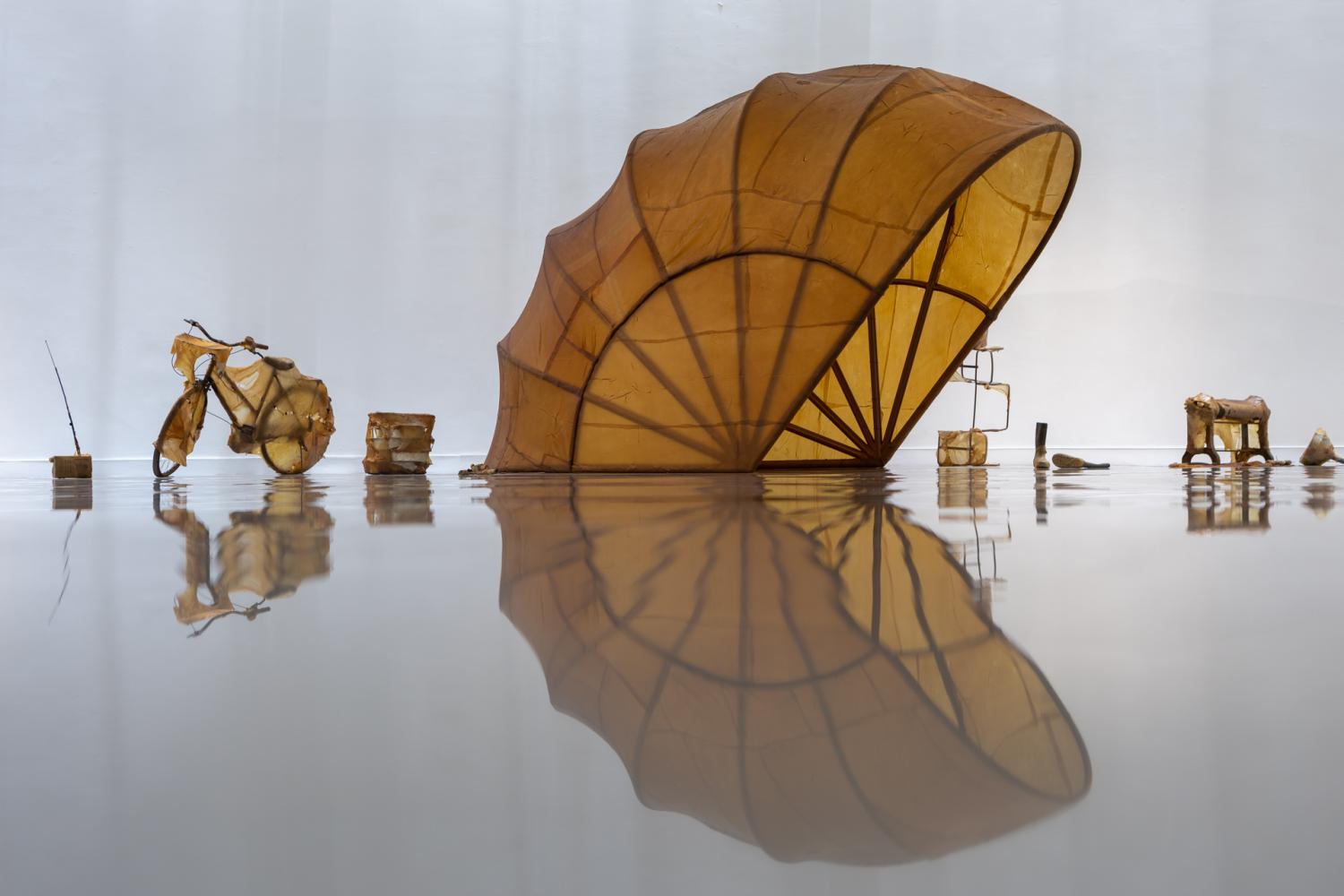In the difficult lives of labourers, two talented artists, Chaiyan Ninlabon and Maneerat Thamnarak, found inspiration to create works for the exhibition "Early Years Project #6: In A Cogitation", which is on display at Bangkok Art and Culture Centre (BACC). Chaiyan and Maneerat were two of eight finalists selected from 80 applicants for "The Early Years Project #6".
Born in Ubon Ratchathani, Chaiyan created the collection Fighters From The Northeast Region, which was inspired by the lives of Isan labourers in Bangkok. His collection features three sculptures: a map of the northeast region of Thailand, a scarecrow, and a giant water jar.
As a child of rubber farmers in Chumphon, Maneerat drew inspiration from the difficulties faced by people due to continually dropping prices. Her collection Glomerida is named after a type of millipede found in rubber farms.
Life spoke to Chaiyan and Maneerat about the inspiration and ideas behind their creations.
Fighters From The Northeast Region
By Chaiyan Ninlabon
Chaiyan's parents moved from Isan to Bangkok when he was little. After graduating from vocational school, he decided to put his education on hold and worked in various factories in his neighbourhood. He switched jobs several times due to poor treatment. He later enlisted to become a soldier and worked as an assistant to a military speaker in the army. Unfortunately, his boss often made fun of him in front of the audience for entertainment purposes. He earned just over 200 baht per day which was difficult to live on. These experiences taught him about inequality and served as inspiration for his sculpture.

Fighters From The Northeast Region is divided into two parts. The first part displays a map of the northeastern region of Thailand and a scarecrow. The map of Isan, made from clay from different provinces, represents labourers from diverse backgrounds and cultures, despite all being from Isan. Each province has its own culture and language. The scarecrow, which moves from left to right as it fights against sunlight and wind, symbolises the struggle of the labourers.
"The final sculpture resembles a giant water jar commonly seen in the countryside, especially in dry Isan. People collect water in these giant jars during the rainy season. The water jar sculpture is made of metal to represent the industrial factor which draws Isan people to the capital city. A mechanism inside the water jar sculpture emits a sound resembling that of churning cement trucks. This sound signifies the blending of cultures, or how Isan people adapt to city life and culture," the artist explained.

"Another highlight is that the lid of the giant water jar resembles Bangkok's manhole lids. All waste goes into the manholes. However, if there is no flood, nobody pays attention to what is beneath the lids. Similarly, people tend to overlook social structures and problems that do not directly affect them."
Chaiyan earned his master's from the School of Architecture, Art, and Design at King Mongkut's Institute of Technology Ladkrabang (KMITL). He is currently a freelance artist and guest lecturer at KMITL. Chaiyan won several awards including the Excellent Prize at The White Elephant Art Award in 2022 and the Oita Asian Sculpture Award in 2016.
"I simply hope that people see my work. However, in Thailand, the art industry receives less attention compared to the music or movie industry. If possible, I hope governmental organisations will support the art industry. During my visits to Singapore and Japan, I noticed sculptures displayed in public places, which made me feel that these countries value artists. Showcasing artwork in public spaces encourages people to engage more with art," said Chaiyan.
Glomerida
By Maneerat Thamnarak
Maneerat was surprised to see several bald mountains in her home, Lang Suan district in Chumphon, during a recent visit. The artist spoke to her parents and other farmers about the situation and discovered that farmers had to cut down rubber trees, which had grown over decades, due to the plummeting price of rubber.

"A couple of years ago, my father cut down a plantation of rubber trees which started growing at the same time that I was born. Rubber farmers used to sell latex or rubber sheets for 100 to 170 baht per kilogramme, but now, they sell scrap rubber for only 20 baht per kilogramme. I am not sure why the price of rubber has dropped so drastically. It seems like latex and rubber are being replaced with other materials and other countries are growing rubber trees to compete with Thailand," said Maneerat.
To survive, most farmers replaced rubber trees with other crops such as durian, papaya, banana and betel palm. Sadly, farmers who cannot afford to grow other plants had to find other jobs. Employees in a rubber factory in Langsuan have also lost their jobs.
These struggles and adaptations inspired Maneerat to create the collection Glomerida.
"There are many glomeridas in rubber farms since this kind of millipede lives in fertile and moist places. When glomeridas feel threatened, they curl up into a ball. Like glomeridas, rubber farmers had to change their lives in order to survive. I created this collection because I want to address an issue which is based on a true story," the artist said.
The highlight of Glomerida is a brown rubber dome-like structure which resembles a curled-up glomerida. Maneerat wanted the area inside the dome to be a safe space for visitors. When visitors enter the dome, they will hear a recording of the environment in rubber farms which helps them feel relaxed. On the floor, visitors will see two separate videos depicting stories of the difficulties of rubber farmers.

Along with the rubber dome, there are other tools or items related to rubber production such as a rubber tapping knife, a pair of boots, a rubber roller machine, a filter funnel, a radio and a bicycle. These items are wrapped with scrap rubber.
"I created the collection by working with local people and former labourers at the factory. They were helpful and asked me if displaying the collection would increase the price of rubber. It was the first time that I had collaborated with so many people on a project."
Maneerat earned her master's from the Faculty of Painting, Sculpture and Graphic Arts, Silpakorn University. During her undergraduate years, her art pieces were inspired by local items and cultures in the three southern border provinces since she studied at the university in Pattani.
The artist has participated in several exhibitions including "Womanifesto Workshop" in Udon Thani organised by the OCAC Art Fund Ministry of Culture in 2023 and "One In A Lifetime Exhibition" at Gajah Gallery in Singapore in 2019.
Maneerat hopes that Glomerida will help visitors understand the problems encountered by rubber farmers.
"My hope is for people who are unaware of this problem to become more aware of it. It is a serious issue. It would also be beneficial if the government sees this exhibition. In the future, I want to create more exhibitions about rubber. There is much more about rubber that I can explore and experiment with," said Maneerat.
"Early Years Project #6: In A Cogitation" runs at BACC until Aug 13. Admission is free. For more information, visit facebook.com/baccpage.







